Real Bodywork Massage Blog
Massage Therapy as Additional Treatment for Multiple Sclerosis (MS)
Over two million people worldwide have multiple sclerosis (MS), an incurable disease that affects the central nervous system. The severity of symptoms vary for each affected person; however, the disease has the capability of becoming disabling, with some patients unable to walk unassisted. When the symptoms do occur, many MS patients have difficulty carrying out daily tasks and functions, which can affect their perceived quality of life. Some of the most common symptoms of MS include fatigue, pain, and spasticity. Spasticity is an abnormal increase in muscle tone and stiffness, which may cause difficulties with speech and movement, as well as pain.
Patients of MS must undergo treatments when symptoms occur, such as physical therapy and/or medications. An issue with MS treatments is the cost associated with these treatments, as well as side effects stemming from medications. Thus, it comes as no surprise that almost a third of MS patients use massage therapy in conjunction with their standard treatments to alleviate symptoms. Backus, Manella, Bender, and Sweatman (2016) recognized this trend and its lack of supporting empirical evidence, and thus decided to test massage therapy’s efficacy with a pilot study.
This pilot study used a total of 24 participants with a nonrandomized, pre-post design. The study lasted for a total of six weeks, with participants receiving a massage every week. The researchers measured for: fatigue, pain, spasticity, and perceived health and quality of life. These measures were taken at the beginning and end of the six weeks.
The massage provided included a combination of effleurage, petrissage, friction, and static compression strokes. A more detailed table of the massage, taken directly from the article, is provided below. The massage lasted between 30 minutes to an hour.
Massage therapy proved beneficial in most of the researchers measures. Fatigue and pain decreased significantly after the six week massage program. Fatigue scores decreased 4.08 points, from 12.0 to 7.92. Pain also decreased 4.54 points, from 18.46 to 13.92. While there was a small improvement of spasticity, the increase was not significant. The researchers explain that a massage more focused on affected muscles might prove more significant. They also note that taking measurements immediately after the massage may provide different results.
After the six week massage treatment, participants also indicated that their perceived mental health and quality of life had improved. Mental health scores saw an increase of 13.29 points, while quality of life saw an increase of 11.13 points. The quality of life measurement can include areas such as perceived general health, physical functioning, and social functioning.
This study does provide a foundation of solid, empirical evidence detailing benefits of massage for patients of MS. The researchers note that treatments for MS can be quite costly, especially since these costs can accumulate into large sums over the span of a lifetime. Also, many treatments do not provide patients with adequate relief from symptoms. Medications may help treat symptoms further, but many of these medications come with unwanted side-effects. An example may be the use of opioids for the treatment of pain – many of these medications can become addicting, especially when used long-term for chronic pain. Taking these into consideration, massage as a supplemental therapy seems entirely reasonable.
While the study is only the first stepping stone of many, it seems that massage therapy truly provides safe and effective relief, both physically and mentally, to those with MS.
References
Backus, D., Manella, C., Bender, M. A., & Sweatman, P. M. (2016). Impact of Massage Therapy on Fatigue, Pain, and Spasticity in People with Multiple Sclerosis: a Pilot Study. International Journal of Therapeutic Massage & Bodywork: Research, Education, & Practice, 9(4), 4. doi:10.3822/ijtmb.v9i4.327
Seven Benefits of Massage
Finding time to yourself is becoming increasingly difficult in a chaotic, non-stop world of juggling family, work, childcare, and finances. It is important to alleviate this stress and maximise the quality of ‘down time’ we have.
Massage, good for the body, mind and soul…
With experts quoting up to ninety percent of disease having links to stress, it is important to minimise this wherever possible. Massage has therapeutic benefits as well as a targeted treatment in the form of physiotherapy massage to alleviate pain and assist with rehabilitation from injury. Massage really can be key to a better body and mind state.
So, how can massage help me?
- Relaxation – Massage therapy has been linked with reduction in the levels of cortisol, or the stress hormone, in the body. When the body is tense during times of stress and anxiety, it produces more of this hormone, leading to sleepless nights, decreased appetite, or increased cravings for the ‘wrong’ type of food, which can cause digestive issues. Massage therapy increases blood flow around the body, helping to relieve tension and thus lowering the level of cortisol and inducing relaxation, reducing stress levels in the body, improving mood, and improving mental state.
- Reducing blood pressure – Regular massage has been shown to reduce systolic (the upper number) and diastolic (lower number) levels. There is a link between using massage almost as prevention in the form of relaxation, and as a non-medical treatment in the use of stabilizing blood pressure. The more tension and anxiety there is in your life, the more pressure you are putting on your vital organs, and high blood pressure can trigger heart attacks and strokes. Regular massage can help control circulation, reduce the stress hormone, and, therefore, help to reduce these risks. Similarly, people with low blood pressure can benefit from improved circulation and reduce their risks.
- Improved posture – Many of us spend the day hunched over a desk or computer, or sit contorted in the driving positon for the daily commute. If you work in a repetitive work environment or in a job that requires lots of sitting, standing and lifting can put a lot of pressure on lower limbs but also on your back. Most postural stress occurs in the shoulders and neck, yet sometimes we accept a level of pain in our lives and live with it, which can cause further injury and damage to our posture as we carry our bodies incorrectly to cope with the discomfort. Massage can help align the back into the correct position, relaxing the muscles allowing the body to move into a non-painful position. This can also allow the body to have greater flexibility in the joints. Massage has been linked to assisting the treatment of chronic complaints such as those with arthritis or chronic back pain as examples.
- Improved circulation – Massage therapy can increase the rich blood supply around the body to stiff, damaged and tense muscles. The improved blood flow can promote recovery of muscles and healing. The actual action of massage can improve lymph circulation, thus improving the body’s drainage system and encouraging the removal of waste from the body’s organs, improving bodily function.
- Strengthen the immune system – The more stressed an individual is, the more fatigued he or she will be, and as well as interrupting sleep patterns and the digestive systems, this can impact upon the body’s immune system, making a person more vulnerable to infection. Massage has been proven to boost the body’s cytotoxic capacity, the body’s ‘defence cells,’ meaning the body can have an increased capacity to fight disease. Regular massage can help maintain the immune system and keep the system resilient.
- Pain management – Massage therapy has been shown to increase blood flow and the feeling of relaxation, which can help to release endorphins promoting a sense of wellbeing that can help with pain management. Massage has been proven to release opioids, the body’s natural pain killer, helping alleviate the pain as well as the mind over matter coping strategy. Whilst it is not the only solution, it can be a combination approach to pain management.
- Tissue regeneration – Massage pumps oxygen and nutrients around the body which gets to the vital organs, promoting regeneration. Oxygen stimulates the healing function in the body. The skin is the body’s largest organ, and increased oxygen can help promote skin cell renewal and reduce scar tissue and stretch marks and improve skin appearance.
Over a prolonged period, regular massages can have an excellent impact on lowering stress levels and improving sleep patterns, therefore improving mood and emotions. Massage can ease discomfort and can help your skin glow with health. Incorporate bodywork into your health and wellbeing plans and book in for a massage to relieve the pressure!
This post was offered by Jon Reyes from SteamShowerstore, Jon is an expert writer in the health and fitness niche and has been writing and studying topics like this one for over 10 years.
Postpartum Anxiety and Massage
Many mothers can attest that motherhood is no easy feat. Perhaps more daunting are the first few days after the birth of your first child. While most may imagine these days as filled with joy and excitement, the reality is that many first-time mothers experience anxiety, from mild to severe, as well as exhaustion and fatigue. Researchers Jahdi, Mehrabadi, Mortazavi, and Haghani (2016) warn that postpartum anxiety may be a stepping stone to postpartum depression (which may lead to long-term consequences for mother and child), and decided to test whether massage was an effective treatment for anxiety in primiparous women.
The researchers found 100 mothers who had given birth a day before the study to include in their single-blind clinical trial. The mothers were randomly separated into two groups: a massage group and a control group. The massage group received a 20-minute seated massage. The procedure was as follows:
“The mother was seated on the edge of the bed. Then, the researcher grasped the top of the mother’s shoulders with both hands and placed the thumbs of each hand just below the base of the skull, making tiny circular movements on the upper neck. In the next stage, the researcher placed the palm of one hand at the base of the skull and made a long and smooth stroke all the way down the patient’s spine to her waist. The second hand followed the first at the base of the skull and stroked down the spine as the first hand returned to the base of the skull. Next, the researcher placed her hands on either side of the mother’s neck under the mother’s ears and stroked down and over the mother’s collarbones with her thumbs just over the shoulder blades and repeated the motion several times. Then, she placed the thumb of each of her hands beside the spine, beginning with the shoulders, and moved the thumbs down the spine to the waist and repeated this movement several times. Finally, she completed the procedure by placing her palms on each side of the mother’s neck and making continuous, long, sweeping strokes down the neck, across each shoulder, and down the back near the spine and repeated the entire process several times.”
The researchers then tested the mothers on their anxiety, using a STAI test. The mothers who had received a massage had significant decreases in their anxiety scores immediately after the massage, as well as into the next morning. Since massage regulates the autonomic nervous system, can adjust neural activity (amygdale, frontal brain, control network), and stimulates afferent c fibers in the skin, it is not all too surprising that massage is effective in alleviating anxiety symptoms. An interesting topic of study may be stress levels for new fathers, and whether massage can help new fathers too.
As new mothers are acclimating to the new physical and emotional demands of motherhood, massage can help bring them moments of peace and calm.
Reference
Jahdi, F., Mehrabadi, M., Mortazavi, F., & Haghani, H. (2016). The Effect of Slow-Stroke Back Message on the Anxiety Levels of Iranian Women on the First Postpartum Day. Iranian Red Crescent Medical Journal, 18(8). doi:10.5812/ircmj.34270

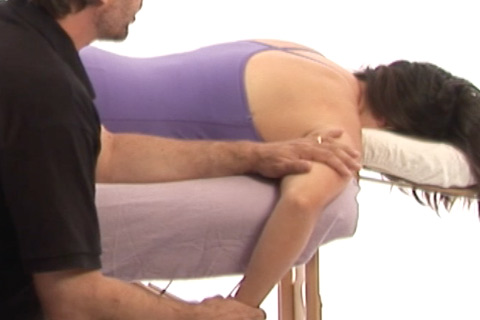
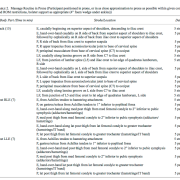
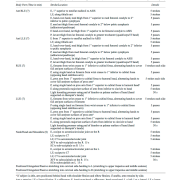
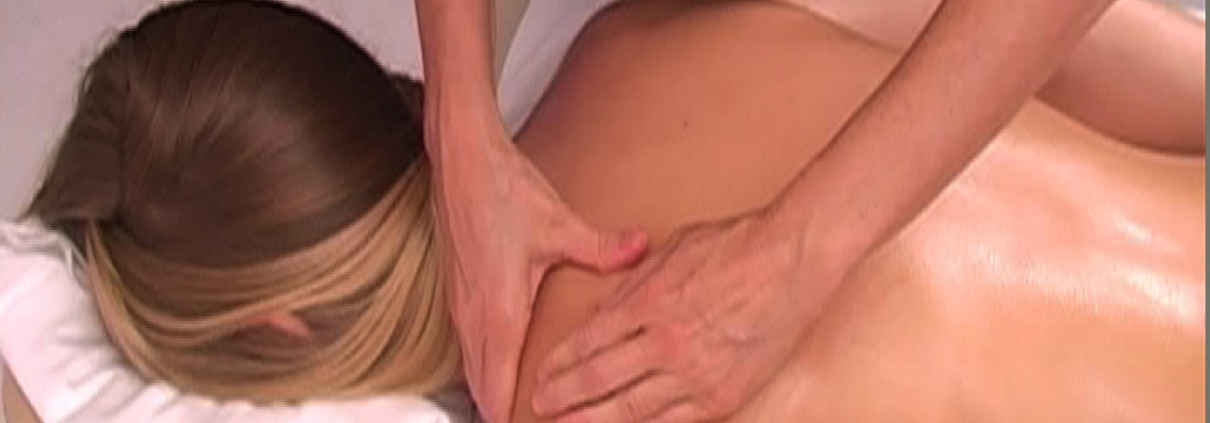
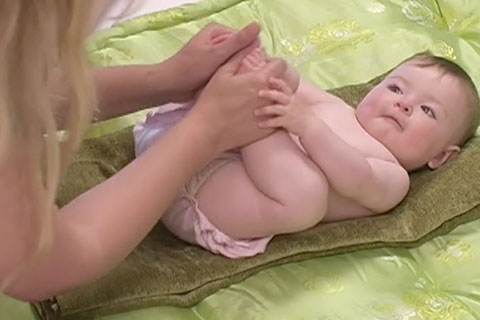
Follow Us!